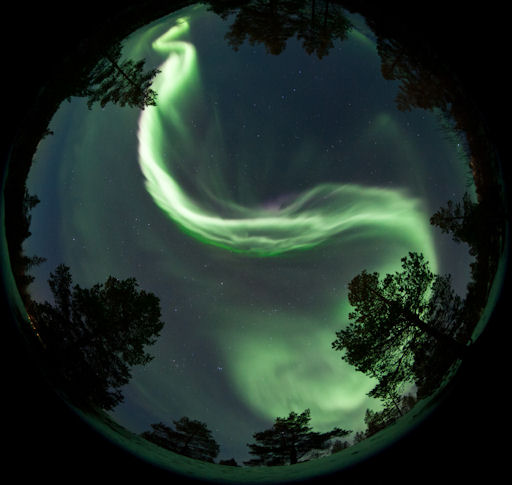Metallic photos of the sun by renowned photographer Greg Piepol bring together the best of art and science. Buy one or a whole set. They make a stellar gift. | | | EVENING PLANETS: When the sun goes down tonight, step outside and look east. Jupiter and the waxing full Moon are in conjunction less than 7o apart. It's a beautiful way to end the day. [Sky maps: Dec. 5, 6] [Images: #1] GROWING THREAT OF FLARES: What a difference a weekend makes. Since Friday, sunspot AR1363 has nearly tripled in area and it has developed a delta-class magnetic field that harbors energy for X-class solar flares. This 48-hour movie from NASA's Solar Dynamic Observatory shows the changes on Dec. 3-4: 
Despite its growing potential for explosions, the sunspot remains mostly quiet producing no flares stronger than C-class. Is this the quiet before the storm--or just plain quiet? Stay tuned. Solar flare alerts: text, phone. more images: from Jim Lafferty of Redlands, California; from Göran Strand of Frösön, Sweden; from John Stetson of Falmouth, Maine; AURORA EXPLOSION: Saturday night on the border between Russia and Norway, the sky suddenly erupted in color. "It was like an aurora explosion," says
Sebastian Voltmer of Kirkenes, Norway. "I was surprised to see a brightening snake forming an 'S' - like the first letter of my name, that appeared at 22.48 pm UT." 
During the outburst, Jupiter was surrounded by streamers of green light. "A very beautiful event!" says Voltmer. Auroras like these have been flickering and surging around the Arctic Circle for days. The source of the displays is a minor solar wind stream, which has been gently buffeting Earth's magnetic field since the month began. NOAA forecasters estimate a 14% chance of more polar geomagnetic activity tonight. Aurora alerts: text, phone. more images: from Casey Thompson of Fairbanks, AK; from Yuichi Takasaka of Yellowknife, Northwest Territories, Canada; from Frank Olsen of Tromsø, Norway; from Göran Strand of Frösön, Sweden; from Don Derosier of Murphy Dome, Fairbanks, Alaska; from Ronn Murray of Fairbanks, Alaska Potentially Hazardous Asteroids ( PHAs) are space rocks larger than approximately 100m that can come closer to Earth than 0.05 AU. None of the known PHAs is on a collision course with our planet, although astronomers are finding new ones all the time. On December 5, 2011 there were 1272 potentially hazardous asteroids. Notes: LD means "Lunar Distance." 1 LD = 384,401 km, the distance between Earth and the Moon. 1 LD also equals 0.00256 AU. MAG is the visual magnitude of the asteroid on the date of closest approach. | | The official U.S. government space weather bureau | | | The first place to look for information about sundogs, pillars, rainbows and related phenomena. | | | Researchers call it a "Hubble for the sun." SDO is the most advanced solar observatory ever. | | | 3D views of the sun from NASA's Solar and Terrestrial Relations Observatory | | | Realtime and archival images of the Sun from SOHO. | | | from the NOAA Space Environment Center | | | the underlying science of space weather | | 
